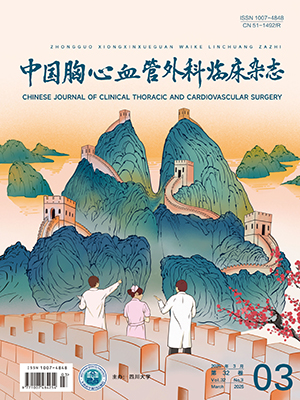| 1. |
栾正刚, 马晓春.围手术期肝功能障碍类型及处理.中国实用外科杂志, 2014, 34(2):123-126.
|
| 2. |
Tsujinaka T, Kido Y, Ogawa Y, et al. Clinical analysis of postoperative hyperbilirubinemia following resection of esophageal cancer. Nihon Geka Gakkai Zasshi, 1987, 88(8):939-946.
|
| 3. |
徐达夫, 尤振兵, 朱卫国, 等.快速康复外科对食管癌患者肝功能的影响.中华实验外科杂志, 2012, 29(10):1920.
|
| 4. |
Liu CL, Du Z, Lou C, et al. Enteral nutrition is superior to total parenteral nutrition for pancreatic cancer patients who underwent pancreaticoduodenectomy. Asia Pac J Clin Nutr, 2011, 20(2):154-160.
|
| 5. |
Powell-Tuck J. Nutritional interventions in critical illness. Proc Nutr Soc, 2007, 66(1):16-24.
|
| 6. |
徐洪波, 黄和平.食管癌术后早期肠内营养的临床应用.肿瘤, 2007, 27(10):832-834.
|
| 7. |
Baker A, Wooten LA, Malloy M. Nutritional considerations after gastrectomy and esophagectomy for malignancy. Curr Treat Options Oncol, 2011, 1(1):85-95.
|
| 8. |
Seike J, Tangoku A, Yuasa Y, et al. Te effect of nutritional suport on the immune function in the acute postoperative period after esophageal cancer surgery:total parenteral nutrition versus enteral nutrition. J Med Invest, 2011, 58(1-2):75-80.
|
| 9. |
谢天鹏, 赵雍凡, 彭林, 等.食管癌术后早期全肠内营养支持对肝功能的影响.中国临床营养杂志, 2007, 15(2):95-98.
|
| 10. |
Gabor S, Renner H, Matzi V, et al. Early enteral feeding compared with parenteral nutrition after oesophageal or oesophagogastric resection and reconstruction. Br J Nutr, 2005, 93(4):509-513.
|
| 11. |
宁桂芝, 夏宏伟, 吕丽艳, 等.食道癌病人围手术期肠内营养支持.齐齐哈尔医学院学报, 2009, 30(15):1856-1857.
|
| 12. |
鱼晓波, 阮征, 黄海龙, 等.食管癌术后早期肠内营养对肠粘膜屏障功能及免疫功能的影响.临床外科杂志, 2013, 21(1):39-42.
|
| 13. |
李宁.肠功能障碍的肠内营养策略.肠外与肠内营养, 2010, 17(4):173-174.
|
| 14. |
Soybel DI, Matthews JB, Silen W. Elemental diet and IV-TPNinduced bacterial translocation is associated with loss of intestinal mucosal barrier function against bacteria. Ann Surg, 1997, 225(2):238-239.
|
| 15. |
Hong L, Wang X, Wu J, et al. Miochondria-initiated apoptosis triggered by oxidative injury play a role in total parenteral nutritionassociated liver dysfunction in infant rabbit model. J Pediatr Surg, 2009, 44(9):1712-1718.
|
| 16. |
洪莉, 王翔, 吴江, 等.胃肠外营养相关肝损伤机制的实验研究.上海交通大学学报(医学版), 2006, 26(11):1201-1205.
|
| 17. |
Tannuri U. Oxidative injury and hepatocyte apoptosis in total parenteral nutrition-associated liver dysfunction. J Pediatr Srug, 2007, 42(3):596.
|




